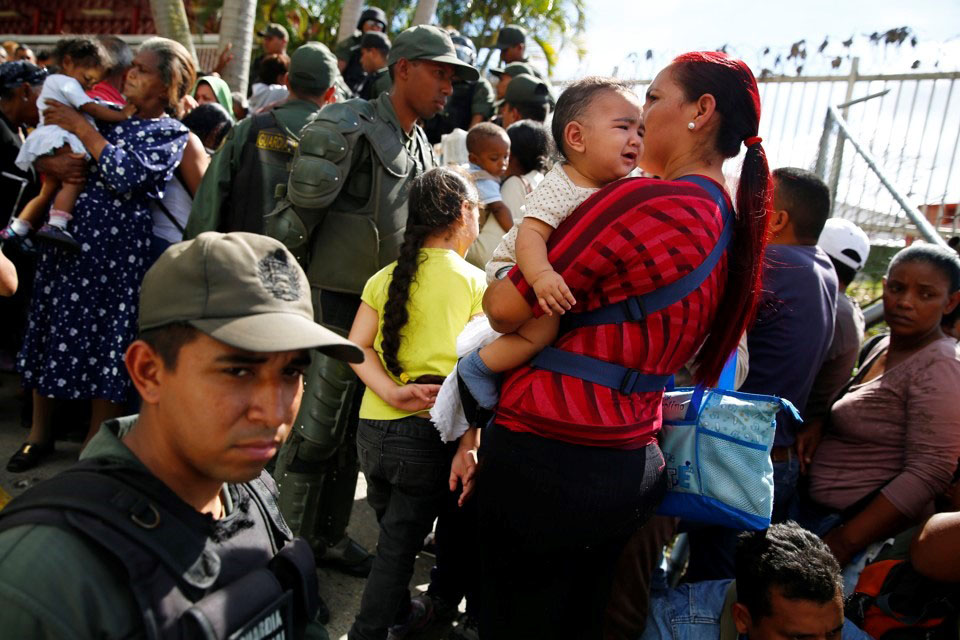I thought that Venezuela’s economic crisis was so acute — with a 12 percent economic contraction in 2017, a 700 percent inflation rate and widespread shortages of food and medicines — that it could hardly get worse. But new data show that it’s going to get a lot worse in 2018.
 Venezuela has entered a new phase in its gradual economic decline since late President Hugo Chavez started his “Bolivarian revolution” in 1999. While the country had the world’s highest inflation rates in recent years, it had not technically reached the stage of hyperinflation, when prices go up by more than 50 percent a month.
Venezuela has entered a new phase in its gradual economic decline since late President Hugo Chavez started his “Bolivarian revolution” in 1999. While the country had the world’s highest inflation rates in recent years, it had not technically reached the stage of hyperinflation, when prices go up by more than 50 percent a month.
But now Venezuela has crossed that threshold in recent weeks, according to leading economists with whom I talked recently. When countries reach hyperinflation, money becomes meaningless, because nobody knows what the price of goods and services is, and the economy is thrown into total chaos and paralysis.
Alejandro Werner, head of the Latin American department of the International Monetary Fund, told me that, “For the first time, the Venezuelan economy has entered into hyperinflationary territory in late 2017.” The IMF forecasts that there will be an accumulated inflation rate of nearly 2,400 percent in 2018, with a decline in the country’s gross domestic product of more than 10 percent.
“That means that, if these forecasts materialize, Venezuela’s economy by the end of 2018 will be less than half of what it was four or five years ago,” Werner said. “There will be an accumulated economic contraction of almost 50 percent.”
He added that, “Obviously, Venezuela’s worsening economic problems will cause even bigger declines in living conditions, bigger health problems, more epidemics and more migration to neighboring countries, as well as greater internal demands for change.”
Luis Alberto Moreno, president of the Inter-American Development Bank and one of the sharpest economic gurus in the region, told me that while some countries in the past have been able to overcome hyperinflation, “At the time there is no visible political will” in the country to embark on structural economic reforms to combat it. As a result, inflation is likely to “keep growing like a snowball,” he added.
It’s hard to know for how long Venezuela’s dictator Nicolas Maduro will be able to control a country under hyperinflation.
In some countries that fell into hyperinflation, such as Argentina in 1989, there were riots in the streets and a chaotic situation that led to President Raul Alfonsin’s resignation. But in other cases, such as Zimbabwe’s 2007 hyperinflation, the government kept printing money and adding zeroes to its currency for more than a year, until it decided to adopt the U.S. dollar as its currency in 2008.
That helped Zimbabwe’s dictator Robert Mugabe stay in power for another nine years, until he was forced to step down last month. But few expect Maduro — who claims to be an anti-American “revolutionary” — to adopt the U.S. currency. In recent days, Maduro announced the creation of a crypto-currency called the Petro, but it has elicited mostly laughter from most serious economists.
Most likely, hyperinflation will result in many more Venezuelans leaving the country, and perhaps triggering a regional migration crisis. More than 2 million Venezuelans have already moved to Colombia, Brazil, Panama and the United States since 1999, and millions more could follow suit.
Maduro may actually be encouraging a mass migration, much like happened in Cuba, so that he can be left with a mass of impoverished people who are dependent on his regime’s food subsidies. His brutal repression of recent opposition protests — which led to more than 150 dead this year — and his recent moves to close all avenues for a return to democracy may be aimed at convincing government opponents to leave.
If Latin American leaders don’t intensify their pressure on Maduro to allow free elections with independent electoral authorities and credible foreign observers, they will soon have a much bigger Venezuelan refugee problem on their doorsteps. Hyperinflation and growing repression are only going to make things worse in 2018.










